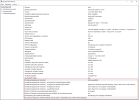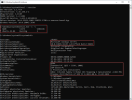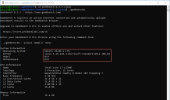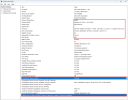Hi, I have been banging my head against the wall trying to get a working configuration for enabling Hyper-V on a 13700K intel host.
I've referenced various CPU flags & kernel versions (5.15-6.2) to try as well as Windows 10/11/Server2019/Server2022 as OS options with no joy so far. With any configuration I use the boot hangs after enabling Hyper-V on the guest.
What are the best practices when trying a setup like this? I used a 10700K as a proof of concept of this idea an was able to enable Hyper-V and utilize GPU-P to split a passed through NVIDIA GPU across the guest and nested guest within. Now on 13th gen I do not get the same result with the same VM details and BIOS options.
I only need to pass the whole GPU via VFIO and don't have issues with code 43 on the guest, so I am just trying to get nested virtualization to work on a Windows guest with hyper-v. How can I troubleshoot why the guest hangs on the boot logo in console?
Thanks! And please let me know if I can provide any more info!
I've referenced various CPU flags & kernel versions (5.15-6.2) to try as well as Windows 10/11/Server2019/Server2022 as OS options with no joy so far. With any configuration I use the boot hangs after enabling Hyper-V on the guest.
What are the best practices when trying a setup like this? I used a 10700K as a proof of concept of this idea an was able to enable Hyper-V and utilize GPU-P to split a passed through NVIDIA GPU across the guest and nested guest within. Now on 13th gen I do not get the same result with the same VM details and BIOS options.
I only need to pass the whole GPU via VFIO and don't have issues with code 43 on the guest, so I am just trying to get nested virtualization to work on a Windows guest with hyper-v. How can I troubleshoot why the guest hangs on the boot logo in console?
Thanks! And please let me know if I can provide any more info!












